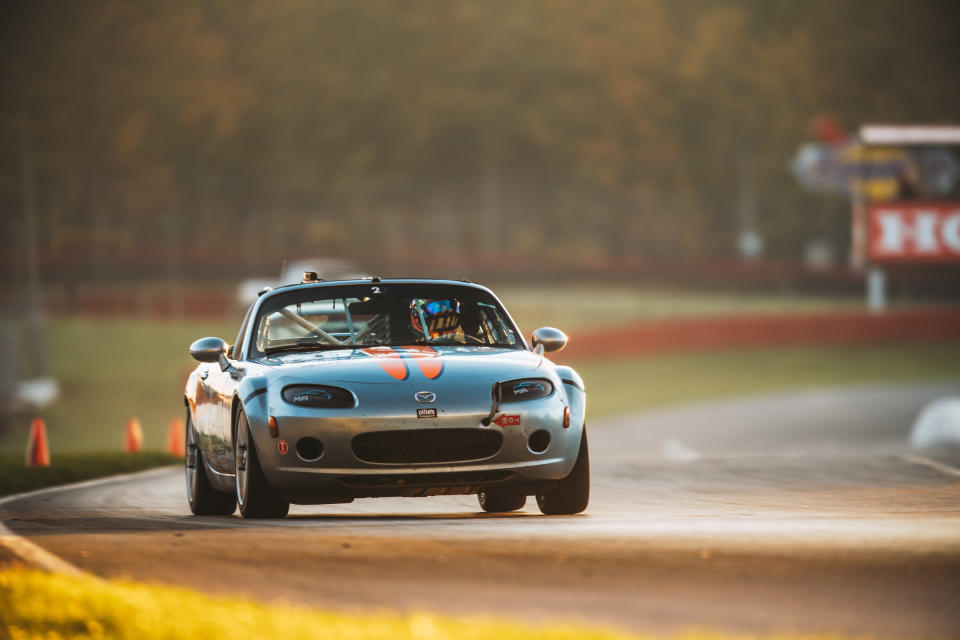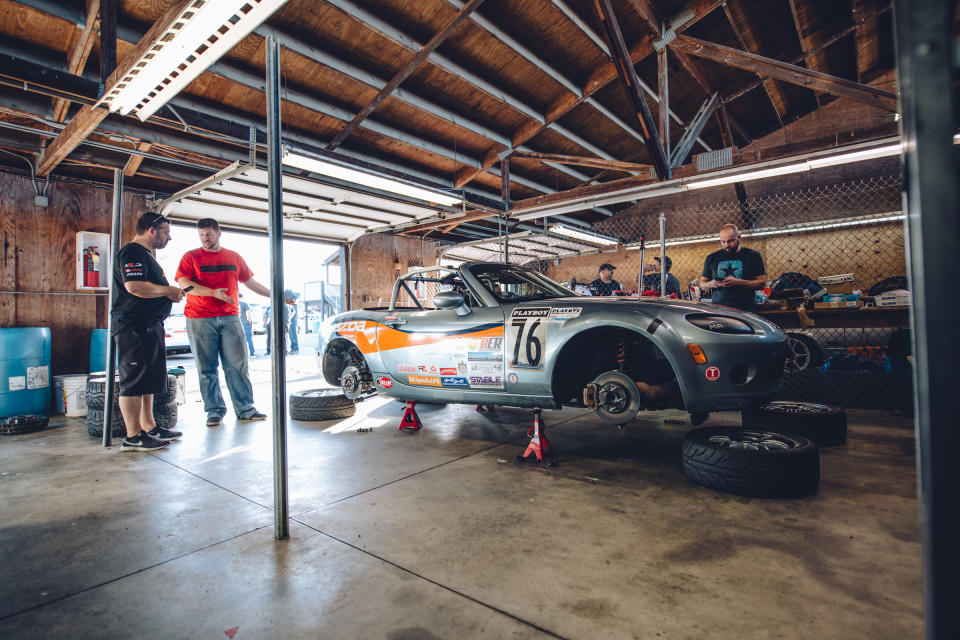How Tire Rack Data Can Make Your Race Team Faster

“Some of these tires,” Woody Rogers tells me, “are... close to the edge.” We’ve been talking about the newest fad in high-performance rubber: Full-tread street tires that are actually optimized for the SCCA Street autocrosses classes and/or the new endurance-racing sanctions like American Endurance Racing and World Racing League. Rogers, for those of you who don’t know, is the well-respected National-caliber autocrosser who oversees tire testing and classification for South Bend mega-retailer Tire Rack.
When he says that, I immediately think of the sidewall blowout failures that ended a privately-funded Nurburgring-record attempt earlier this year. You may recall that the Viper ACR was sold with a specially-developed Kumho V720 tire that, according to rumor, bore zero resemblance to any other product by that manufacturer. It was wicked fast, wicked light - and, apparently, not quite up to the sustained cornering loads imposed by the ACR’s aero package at the Nurburgring. To this day, the “V720 ACR” is a combination of holy grail and urban legend, all wrapped up in a very expensive and mysterious circle of shadow-treaded rubber.
I ask if he's referring to those Kumhos. “No, no, that’s not what I mean,” Woody clarifies. “It’s more a case of these compounds being very, very close to what you get in a DOT-R tire, or even a non-DOT slick. There just isn’t much room anymore between these 200- or 180-treadwear products and an SCCA race tire. I’m not sure how much further they have to go.” Yet we both know that if there is any distance left to go, it will probably be covered in short order.
After all, we are in the middle of a “tire war” that dwarfs the Michelin-Bridgestone battles in Formula One. A few years ago, the SCCA made the controversial decision to mostly eliminate “R-comps” from their National Solo program. For a couple of decades, it had been common practice for drivers of “stock” autocross cars to use special-purpose Hoosier, Kumho, or Hankook tires in competition. These tires typically had just two shallow and narrow grooves to meet the letter of the DOT law. The rest of the surface was slick and sticky. Most of the top competitors used them for between 10 and 30 runs, replacing them once, sometimes twice per weekend. They brought their tires to the autocross course via trunk or trailer.
When the SCCA responded to general concerns about cost and hassle in autocrossing by specifying a minimum 200-treadwear tire, it poured gasoline on a fire that was already burning thanks to the increasing use of 180-and-up treadwear tires in endurance racing. Some of the major 200-treadwear tires went through multiple redesigns in the space of just two or three years in a search for ultimate grip. And some of the manufacturers took a hard look at the fact that “DOT treadwear” isn’t actually tested by the DOT. It’s self-reported by the maker, the same way that fuel-economy numbers are. If you think that your new set of 200-treadwear tires will really last even half as long as the 380-treadwear tires on your SUV, well, you probably shouldn’t think that.
If you hang around any Solo paddock or AER race, you’ll hear people swear up and down that one tire is much faster than another, or that one tire lasts longer, or that one tire is a “Miata tire” and another tire is a “Corvette tire." They’ll say they’ve seen it with their own eyes, but as any scientist will tell you, “the plural of anecdote is not data.” People say they’ve seen UFOs and Bigfoot, too.

Woody Rogers and the folks at Tire Rack think they have a better way. They have a dedicated facility for tire testing and a rigorous, repeatable method evaluating tires on street performance in ride quality, noise quality, everyday handling and fuel economy; on steering response, cornering and braking traction and overall controllability on a dry and wet race track; and measured performance in lap time, slalom time, 5o-to-zero ABS panic stop, and steady-state cornering g-forces on dry and wet track.
They use National-caliber autocrossers for this testing, since they tend to have a lot of experience judging tires in just a few laps of a course. And they publish the results. As a retailer, rather than a manufacturer, “the Rack” isn’t that concerned about which tire you buy. They just want to make sure you buy it from them. “Not all of these new tires are great, or even good,” Woody notes.
After hearing about Tire Rack’s testing procedures, I came up with an idea. As some of you already know, my wife and I run the “Road & Track And Friends” Mazda MX-5 Cup car in American Endurance Racing. Earlier this year, we’d gotten a class win on my personal favorite “edge tire,” the Dunlop Direzza Star Spec. I challenged Woody to come up with a better tire than the Direzza. He said he’d look through his data and get back to me.
When he called back, it was to suggest the new Falken Azenis RT615K+. “I’ve looked at the data,” Woody said, “and I think these tires will stay fast over the duration of the race.” He shipped us a set and we had them mounted.

We brought both the Direzzas and the Falkens to Mid-Ohio for October’s AER event. Our team of drivers ranged from a relative rookie with just a few races under her belt to a Daytona winner, with the rest of us in between. On Day One we ran the Direzzas; on Day Two we ran the Falkens. The weather was almost identical both days, sunny with temps warming from the 40s in the morning to the 70s in the afternoon. We took a third place on Saturday and a second on Sunday to clinch the overall weekend win - the difference due to a radiator cap committing suicide during one stint, not because we suffered from lack of pace.
So who was right? Me, with my racetrack-anecdote Direzzas, or Woody, with his testing-determined Falkens?
The data said that the Falkens were, in fact, faster - by one-tenth of a second. Score one for the man at Tire Rack. And our Daytona winner expressed a preference for the Falkens as well. But it wasn’t quite that cut and dry. I liked the Direzzas better and I was personally about two-tenths faster on them during my stints. They also seemed to wear a little more evenly. I wasn’t the only one who felt that way.
If our team had to vote tomorrow on which tire to use for the next race, I’m not sure how the vote would go. The truth of the matter is that we can’t even afford to relax and rely on the data from this past October. By the time we return to the track in February, there might be another hot new tire on the shelves. In that case, I think we’ll look at the Tire Rack’s data. At the very least, it would save us from making a major mistake. We can afford to lose or gain a tenth of a second - this is club racing, not Formula One. But we probably couldn’t afford to lose a full second or more, and that’s a risk you always take when you choose a new tire sight unseen. We might not need to be on the bleeding edge - but like this modern group of Extreme Performance tires, we need to be close.
You Might Also Like

 Yahoo News
Yahoo News 